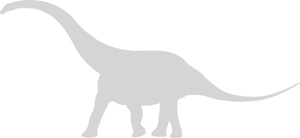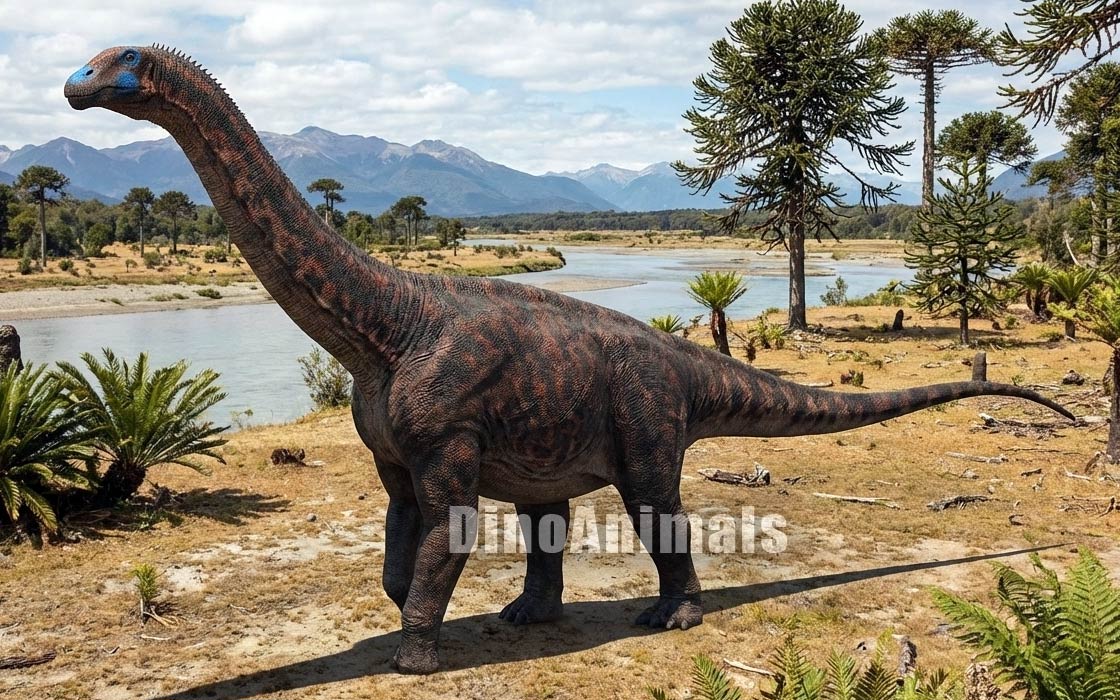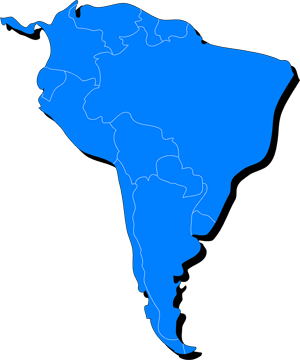Every month, 100,000 readers use the Dinosaur Database, but we receive no support from you. Developing and updating the database requires a lot of work. If you want it to remain open and be updated, please support us via the "Buy us a coffee" button available on every page or via the Support page.
Dinosaur: Cienciargentina sanchezi

| Length*: | 12 m | 39.4 ft |
| Weight*: | 6 t | 13,228 lb |
*The largest known specimen
Period
Epoch: Late Cretaceous
Stage: Cenomanian-Turonian
Years: 100.5–89.8 Ma
Details
Status: valid
Author: Simón & Salgado
Year: 2025
Distribution
Area: South America
Country: Argentina
Region: Neuquén
Formation: Huincul
Description
Cienciargentina sanchezi
Cienciargentina sanchezi is a newly described rebbachisaurid sauropod from the Late Cretaceous (upper Cenomanian–Turonian) of the Huincul Formation in Patagonia, Argentina. It was discovered near Villa El Chocón, Neuquén Province, at a site known as La Antena Quarry. The genus name honors Argentina’s scientific and technological community (Ciencia Argentina), while the species name commemorates Teresa Sánchez, a noted contributor to Argentine paleontology.
This dinosaur represents one of the last known diplodocoids globally, as rebbachisaurids were among the final surviving lineages of this group before titanosaurs came to dominate Cretaceous sauropod faunas.
Discovery site: Huincul Formation – La Antena Quarry, near Villa El Chocón, Neuquén Province, Argentina
Physical Characteristics
Cienciargentina sanchezi was a medium-sized rebbachisaurid sauropod. Based on preserved limb elements, the estimated femur length is 84 cm (0.84 m / 33.1 inches), suggesting an overall body length of approximately 10–12 meters (33–39 feet). While no full body reconstruction has been made yet, size comparisons with related taxa such as Limaysaurus and Cathartesaura support this estimate. Its mass is not yet formally estimated but likely ranged between 4,000–6,000 kg (8,800–13,200 lb), based on femoral robustness and known body plans of rebbachisaurids.
Key anatomical traits include:
- Absence of cervical epipophyses.
- Amphicoelous to slightly opisthocoelous dorsal vertebrae.
- Posterior dorsal neural spines extended anteroposteriorly.
- Highly complex system of laminae in dorsal and caudal vertebrae.
- Forked chevrons without anterior/posterior projections.
- Dorsally directed femoral head extending above the greater trochanter.
These features distinguish Cienciargentina from other South American rebbachisaurids such as Demandasaurus and Limaysaurus.
Diet and Feeding Habits
As a rebbachisaurid, Cienciargentina was herbivorous, likely using its long neck to feed on low to mid-level vegetation such as ferns, conifers, and early flowering plants. Its skull was not preserved, but it probably had dental and cranial adaptations similar to other rebbachisaurids, which had slender teeth and lightly built skulls suited to selective browsing.
Habitat and Distribution
Cienciargentina sanchezi lived in a semi-arid floodplain ecosystem with fluvial and lacustrine influences, characteristic of the Huincul Formation. This formation has yielded an exceptionally diverse fauna, including:
- Theropods such as Mapusaurus and Skorpiovenator
- Titanosaurs like Choconsaurus
- Other rebbachisaurids and crocodyliforms
This diversity suggests a complex ecosystem during the mid-Cretaceous faunal turnover in South America.
Behavior and Social Structure
There is no direct fossil evidence for behavior, but Cienciargentina likely exhibited slow, deliberate locomotion, possibly moving in small herds. As with other diplodocoids, it may have relied on size and group behavior as primary defense mechanisms rather than speed or agility.
Discovery and Research
The holotype (MMCH-Pv 45) was collected from La Antena Quarry and includes cervical, dorsal, and caudal vertebrae, ribs, pelvic elements, and limb bones. Additional referred specimens (MMCH-Pv 54 and MMCH-Pv 55) represent smaller and larger individuals, respectively.
The species was formally described by Simón and Salgado in 2025 and represents the ninth rebbachisaurid taxon from the Huincul Formation. Its bones were found disarticulated but associated in a single stratigraphic horizon of ~1.5 m depth, in an area of ~100 m².
Significance and Notable Facts
- One of the last diplodocoid sauropods known from the fossil record.
- Shows an advanced degree of vertebral lamination and elongation in posterior caudal elements.
- Coexisted with titanosaurs in the same horizon, indicating niche differentiation or transitional ecosystem stages.
- Highlights the paleobiogeographic importance of the Huincul Formation for understanding sauropod extinction patterns.
Conclusion
Cienciargentina sanchezi adds to the growing diversity of rebbachisaurids from South America and enhances our understanding of diplodocoid persistence in the mid-Late Cretaceous. Its unique vertebral features and relatively late stratigraphic position make it crucial for examining the decline of non-titanosaurian sauropods and the evolutionary dynamics of the Cretaceous in Gondwana.
Locations
Sources
Material: The holotype specimen, MMCH-Pv 45, comprises three cervical vertebrae, four dorsal vertebrae, two ribs, seventeen caudal vertebrae, four haemal arches, a scapula and sternal plate, an ischium, and both femora, tibiae, and fibulae.
Two paratypes include the smaller MMCH-PV 54 (a right ischium and tibia) and the larger MMCH-PV 55 (two ribs and a fibula)
References: Simón, M. E.; Salgado, L. (2025). "New rebbachisaurid (Dinosauria, Sauropoda) from the Huincul Formation (upper Cenomanian-Turonian) of Villa El Chocón (Neuquén Province, Argentina)". Cretaceous Research. 10613




